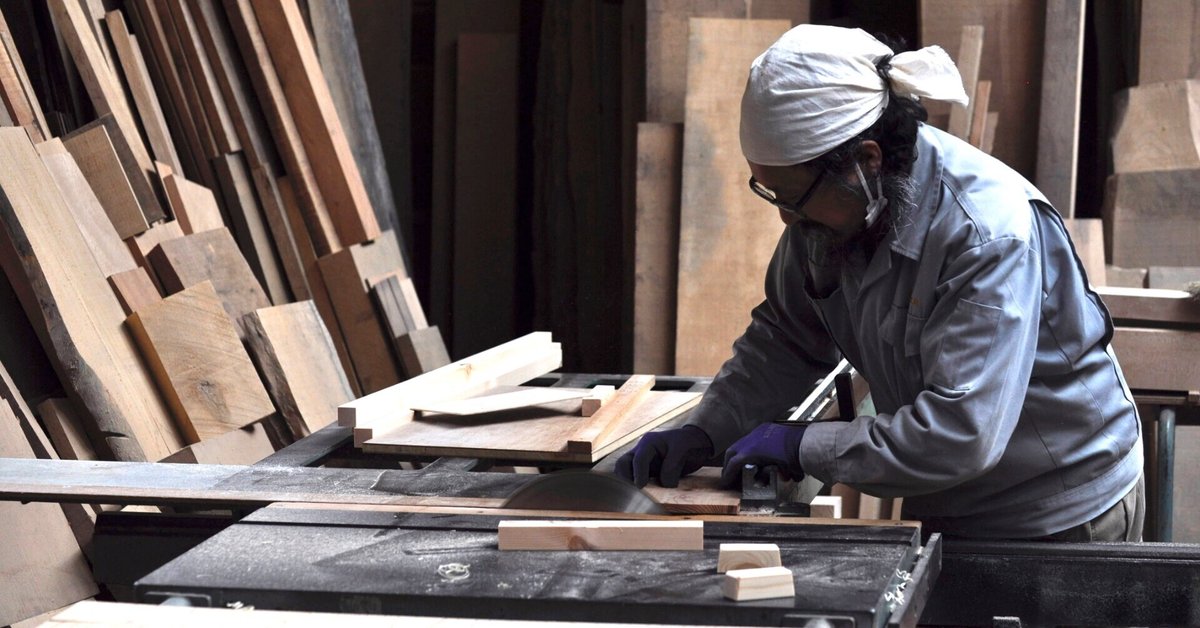
木の椅子JUN 藤本順正 Wood chair Junsei Fujimoto | 木工家具 Wood funiture| 鳥取県東伯郡三朝町 Misasa Town, Tottori Prefecture
藤本順正 フジモトジュンセイ
1964年鳥取県東伯郡三朝町生まれ。奈良教育大学にて美術を学ぶ。在学中、木工作に興味を持ちスピーカー、卓袱台、屋台、スケボーの台など勉学とは関係のないものを一生懸命作っていた。椅子試作会社に就職後、木の椅子を作ることがライフワークに。1998年奈良県奈良市(田原地区)に住み、木工活動を始める。
2013年、故郷の三朝町に帰省し、工房を構え木工家具の製作を再度始める。帰省後は家具を生活道具と考え、簡素ながら実用的な椅子や机を針葉樹で製作する。小屋に置かれているような無骨ながら合理的な作りの小屋シリーズなどCOCOROSTOREにて新作発表した。
Fujimoto Junsei
Fujimoto was born in Tottori Prefecture, Misasa Town in 1964. He studied art at the Nara University of Education. While a student, he became interested in woodworking. Completely unrelated to his art studies, he put his effort into making things: wooden speakers, a ping pong table, a portable cart, a skateboard, and so on. After working at a chair prototype company, furniture became his life work. In 1998, while living in Nara City, Nara Prefecture (Tawara region), he began working as a carpenter. In 2013, he returned to his hometown of Misasa. There, he opened a workshop and started making wooden furniture again. The return home made him reflect on the idea of furniture as tools for daily living. With that thought, he began making simple, practical chairs and tables with conifer wood. His new line of work debuted at COCOROSTORE, including a series of rustic but rationally constructed chairs that look like they would be found in a barn.

After returning to his hometown in 2013, Fujimoto spent three years building this workshop






奈良県にいた頃は家具に使う材料は広葉樹の栗・樫・楓、椅子の部材にはトネリコや楢など硬い木を使い、細部まで細く削り出されて堅牢に組まれた家具が中心でした。鳥取に戻られてからは新作として針葉樹の杉やヒノキを使った椅子やテーブルに取り組み安価で気軽な生活道具とした家具を発表されています。
針葉樹は成長が早いが柔らかくて広葉樹と比較して粘りや強度が劣る。針葉樹の欠点になるところは藤本さんが最初に就職先に選んだ椅子の試作会社で培った技術、ノウハウが生かされ欠点を補う形となっています。椅子は人間を支える道具なので荷重を分散させて色々な姿勢にも耐えうる必要がある。材料を太くしたり厚いもので無骨な仕上がりにするではなく、奈良県時代の部材の適正や細い線や削り込むことの特性など熟知した上で、この椅子やテーブルは出来ている。針葉樹の軽さを活かした画期的なものに変化しています。藤本さんに会う前に初めてこの椅子を見た時、座った時に感動して鳥肌が立ちました。
この椅子を応用したアーム付きの椅子やスツール、子供椅子に幼児椅子、ベンチなどたくさん生まれています。これらの椅子に合わせてテーブルも如何様にも形を要望すれば製作してくださいます。
小屋シリーズとして名付けられたこの家具たちは廉価で気兼ねなく使えるファースト家具として迎え入れやすい家具ですし持ち運びも軽くて年配の方にも重宝される、また粗野な扱いにも耐えうる、十分な作りになっているので子供が小さいご家庭にもオススメです。
使い込むと座面や背もたれの表面が滑らかになり、光沢が出てきます。風合いが増して色艶出てくるので使い込んで育ててください。
Barn Chair (Barn Series)
While living in Nara Prefecture, Fujimoto made furniture with finely carved details from hardwoods such as chestnut, oak, and maple. After returning to Tottori, he started making practical tables and chairs from conifer and cypress for everyday use.
Coniferous trees grow quickly but are soft and have less tenacity and strength than hardwoods. At the chair prototype company where Fujimoto had his first job, he learned how to compensate for the drawbacks of softwood with skill and technique. Chairs are tools needed to support people of various body types sitting in various postures. Rather than using thick materials to create a rugged finish, he based his designs on the materials and delicate lines found in furniture from the Nara Period. He used the lightness of conifer wood to create revolutionary designs. When I first sat in a chair designed by Fujimoto, I was so moved that I got goosebumps.
Many other designs have been created based on the first Barn Chair chair design, including armchairs, benches, and children's chairs. Custom-order tables can also be requested to match the chairs.
The Barn Series is an excellent choice for those looking to buy handmade furniture for the first time. Its functionality, durability, and affordability make it appealing to a wide range of customers, from older adults to families with small children.
The surface of the furniture will become smooth and shiny with use and the texture and color will become more lustrous with time. This is furniture you can grow and age with.



w(幅).2300mm x d(奥行).900mm x h(高さ).750mm
Dining Table (hardwood series) Material: Chestnut
w (width).2300mm x d (depth).900mm x h (height).750mm
作業スペースでもあり、食事の時間、そして寛ぎの時間を兼用したいという要望に応えたリビング兼ダイニングテーブル
特注テーブルが出来上がり間近でしたので組み上げの一部を撮影させていただきました。 藤本さんのテーブルの天板は手鉋で仕上げられているので木目がスカッとシャープに整られているので鏡面のように輝いています。鉋仕上げは水切れがよいので生活していく上で輪染みや色移りがしづらいという利点があります。
鉋でなくサンドペーパーなどで仕上げられたテーブルは見た目にはわかりずらいですが表面が細かく毛羽立っているので手で触るとザラザラとした感触と水気を吸い込みやすい性質があるので輪染みや色移りしやすいです。 4本の丸脚も轆轤で挽いたのちに手鉋で面を取っているので表面に細かな凹凸が生まれ、立体感が現れます。手間をかけて鉋で整えて綺麗に仕上げることはセールストークや見た目ではなく、使用される方の、後の事を考えた合理的な手法なのです。
天板の厚みは30mmと、ある程度の厚みに仕上げているので、使用者が何十年と、このテーブルで生活していく上で、打痕や染みなど、年を重ねるごとに増えた傷も次の世代に渡したい時や引っ越しなど転機に天板を綺麗に削り整えたいとなった場合も問題なく削りに耐える厚さを持っています。メンテナンスをしてこの栗の木が育った年数以上に使用してもらえたら、製材に関わった方や作り手の藤本さん、お店でご紹介したわたし達の本望を遂げられると思います。
それには材料の良し悪しももちろんですが構造や何年先も飽きの無い意匠を提案していく事が重要だと自分に言い聞かせて心に刻んでいます。
A living/dining table that responds to your dining, relaxing, and workspace needs.
This custom-made table was almost complete, so I photographed a portion of it being assembled. The surface of Fujimoto's tables are hand planed. The smooth, sharp grain of the wood shines like a mirror. As moisture drains well from this hand-planed wood, it also has the advantage of being difficult to stain.
At first, it may be difficult to tell the difference between a tabletop finished with sandpaper or a hand plane. On closer look, you will notice tabletops finished with sandpaper are finely fluffed and rough. Further, the high moisture absorbency leaves water rings and causes color to transfer easily.
The four table legs are shaped on a potter's wheel. Then, they are hand planed, which leaves delicate undulations on the surface and creates an interesting texture. Taking time to make furniture and finishing it with a hand plane is not a sales gimmick. Fujimoto sincerely considers the future of the user.
The tabletop is 30mm thick, durable enough to last decades, to be passed on to the next generation, and survive big moves. It is strong enough to endure the scratches, dents, and stains that occur over using a table for a long time. The table top is thick enough to be resurfaced and planed in the future. If this table can live longer than the chestnut tree cut down to make it, I believe Fujimoto's aspirations will be met.
I have taken to heart what Fujimoto taught me. Not only the quality of materials but also the structure and design are important.






ワークスツール
ワークスツールは工房で作業椅子として使用されています。
座面が丸頭になっているので前傾で作業しても決まりが良く、座面の材質が栃なので腰掛けたときにソフトな当たりが優しいです。脚のカーブラインが特徴的で、貫を入れる時にグイッと脚を曲げながら貫を通してから黒檀のちぎりを入れて仕上げています。藤本さんが独自に考案した方法でユニークでとても綺麗な形状をしています。
Work Stool
Work stools are commonly used in a woodshop.
The rounded seat of this design provides comfort as you lean forward to work. The chestnut wood is soft and gentle to sit on. Its curved legs are distinctive. They are bent sharply and held together by ebony joints. Fujimoto's method is very unique and elegant.
工房の外のデッキで話していたら桃の花が綺麗に咲いていたので剪定した枝いっぱいあるからと手土産をいただき、自宅の花器にいけ春の陽気を楽しみました。
When I was talking with Fujimoto on the workshop deck, I noticed the peach trees were blooming, so he gave me some branches. I took them home and put them in a vase—cheerful spring.

|お問い合わせ先|
COCOROSTORE
〒682-0821 鳥取県倉吉市魚町2516
0858-22-3526
HP:https://cocorostore.jp
当店取扱い商材:木の椅子JUN 藤本順正
この記事が気に入ったらサポートをしてみませんか?
